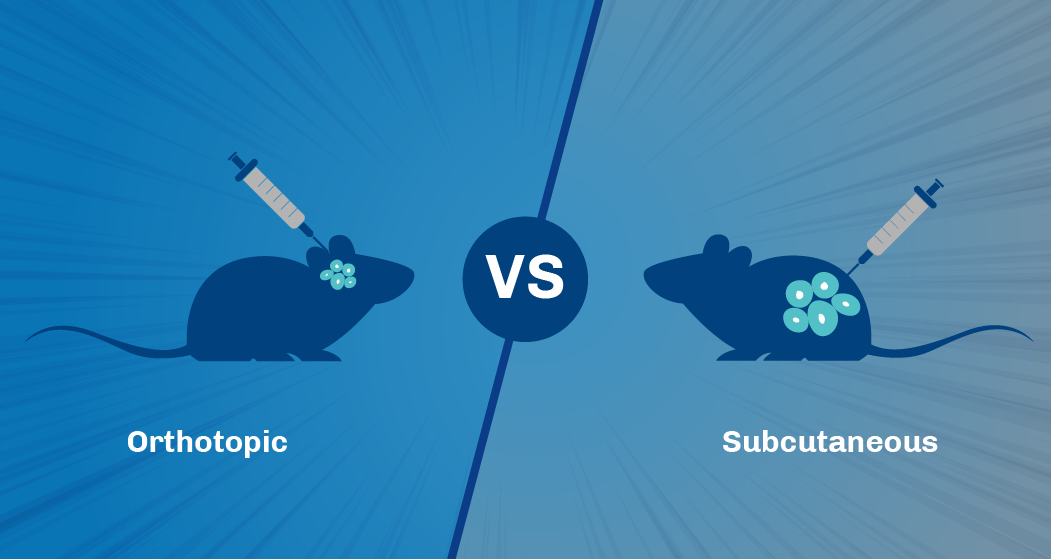The scientific community has long appreciated the importance of in vivo tumor models for understanding cancer biology and testing therapeutic strategies. Two popular methods for tumor implantation in these models are orthotopic and subcutaneous implantation. Both have their advantages, and the choice often depends on the specific goals of a study. In this post, we'll delve deep into the benefits of each method to guide researchers in their decision-making process.
Orthotopic vs. Subcutaneous: Unpacking the Strengths and Limitations of Tumor Model Implantation Sites
October 24, 2023

- A Translational Lens on Synergistic Cancer Therapy: Insights from Our Recent Case Study
- Redesigning Preclinical Oncology: A Framework for Improving Clinical Translatability with AI, RECIST-Inspired Metrics, and Systems-Level Thinking
- Radiopharmaceutical Dosing Under FDA’s New Spotlight: What You Should Know
- Expanding Access to CART Therapies: TD2 Oncology Featured in SCRS inFocus
- The Rise of Humanized Mouse Models in Oncology: What Drug Developers Need to Know
A Translational Lens on Synergistic Cancer Therapy: Insights from Our Recent Case Study
In cancer drug development, monotherapies often lose ground when tumors adapt. This is especially true for KRASmutant non–small cell lung cancers ...
Redesigning Preclinical Oncology: A Framework for Improving Clinical Translatability with AI, RECIST-Inspired Metrics, and Systems-Level Thinking
Despite decades of investment in oncology drug development, the translational pipeline from preclinical models to clinical success remains ...
Radiopharmaceutical Dosing Under FDA’s New Spotlight: What You Should Know
The FDA has issued a new draft guidance titled “Oncology Therapeutic Radiopharmaceuticals: Dosage Optimization During Clinical Development.” This ...
Get Started
Contact Us Today!
If you’re looking for an expert team to guide your trial with efficiency in mind, we can help. As the creators of the Dynamic Trial, TD2 provides start-to-finish support with trial strategy, design and execution for faster go-to-market potential.


